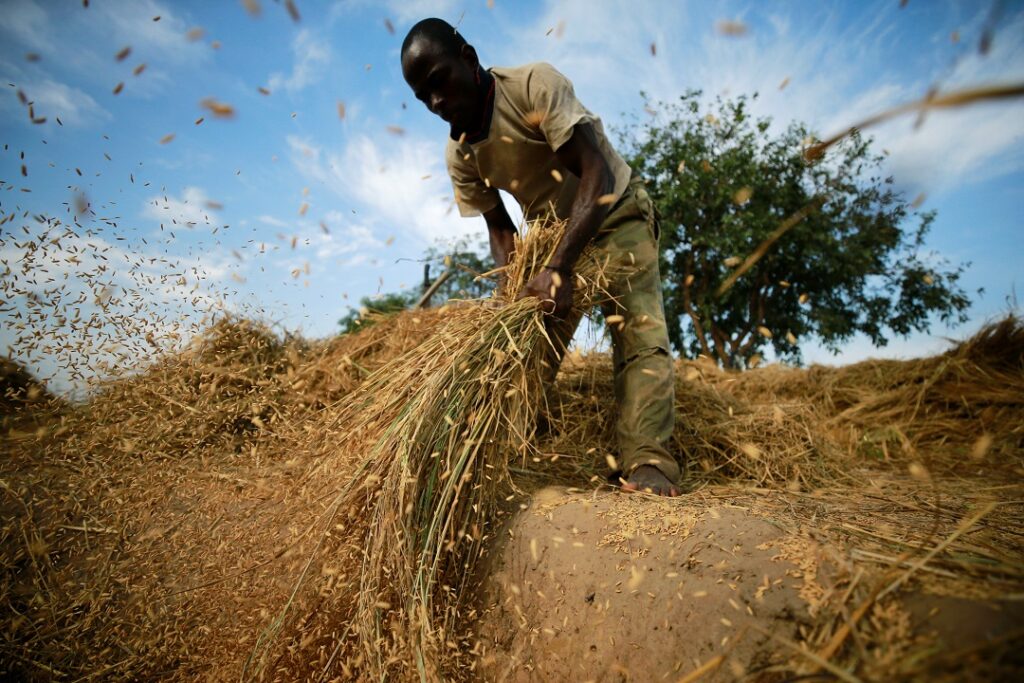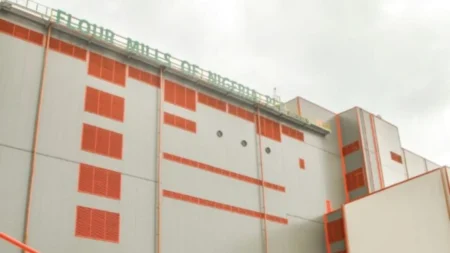- One in five people in Africa suffers from hunger.
- With the rising population, action is necessary to ensure access to healthy and sufficient food.
- AfCFTA can serve as a strong incentive for farmers and other participants in agri-food value chain.
Africa’s population is expected to hit two billion by 2050 yet her food security systems remain a fleeting mirage largely due to delayed financial commitments. Granted, in the past two decades, most African governments have placed great emphasis on transforming their food systems but it progress has been rather slow.
Financing of food systems
Currently one in five people in Africa suffers from hunger. And with a population of 1.1 billion people, it is imperative to take immediate action to ensure access to healthy and sufficient food by 2050. So how will Africa achieve this momentous goal? Experts say all the moving parts are in place, all except one, the financing of food systems.
Amath Pathe Sene, Managing Director of the African Food Systems Forum (AGRF), highlights that the African Continental Free Trade Area (AfCFTA) presents an opportunity to eliminate trade barriers and enhance intra-regional trade. This move can serve as a strong incentive for farmers and other participants in agri-food value chains to boost local production and transform food systems.
Sustainable Food Systems have been the core objective of both the Maputo and Malabo Declarations as the basis of agriculture transformation in Africa. To this end, agriculture stakeholders convened a summit in June 2023 to deliberate a New Global Financial Pact.
World leaders and stakeholders gathered in Paris for the summit to “rethink and restructure the global financial system and strengthen financial support to developing countries facing debt, climate change, and poverty.”
The summit outcome was that the World Bank opted to put a temporary “hold” on debt repayments for countries affected by extreme climate change. And even though the hold will apply for new loans, it was a welcome move.
Debt relief and restructuring
For example, one of the beneficiaries was Zambia. The country agreed with its creditors to restructure $6.3 billion of its bilateral debt. This brought huge relief to Zambia because the loan actually represented over a third of its total external debt.
What this debt restructuring did was allow the government of Zambia to receive $188 million in support grants from the IMF. A total of 21 African countries are in debt distress but are not eligible to receive such grants. And that makes a huge difference.
Debt burden prevents many African nations from accessing much-needed funding to improve their agricultural productivity. Notably, thanks to the summit, the IMF announced $100 billion worth of Special Drawing Rights (SDRs) for vulnerable countries. This will bring great relief to these countries, enabling them to remain liquid.
The summit also motivated the World Bank and other multilateral development banks to make an additional $200 billion available in loans over the next five years.
Another beneficiary was Senegal, which signed its fourth Just Energy Transition Partnership (JETP) agreement. The deal is made with the G7 countries and allows Senegal to receive $2.74 billion for renewable energy projects.
It may seem that this funding has not gone directly into agriculture, but harnessing a country’s energy potential helps develop sustainable food systems. Energy is a major part of the sustainable agriculture systems, the first global Stocktake that was part of the Paris Agreement. The Stocktake initiative requires countries to review progress made in achieving essential climate goals.
The summit said results of the Stocktake will be presented at the United Nations Climate Change Conference (COP28), later this year in the United Arab Emirates (UAE).
Agricultures’ share of greenhouse emissions
Interestingly, agriculture is a big player in greenhouse gas emissions. It follows that investment in transitioning to sustainable, resilient, and inclusive food systems can turn agriculture a key part of climate change solution.
“In fact, without this transition, many global goals cannot be achieved. Hence, the importance of maintaining pressure on developed countries to fulfill their promises of providing the resources needed by developing countries to sustainably increase food production and supply for their rapidly growing population,” asserts Mr. Sene.
Ahead of the upcoming “Global Stocktaking,” the UN Food Systems Summit was held in Rome, Italy on July 24 to 26. This meeting looked at how to “create a conducive space for countries to review commitments made during the Summit, share successful experiences and early signs of transformation, and maintain momentum to strengthen the resilience of food systems.”
In the wake of the Summit, the UN Food Systems Coordination Hub was formed. The first task of the hub was to develop a model that countries can use to structure the progress review of their commitments and food systems in general.
“If Africa takes the lead, it can take advantage of the review processes of the aforementioned declarations and commitments to accelerate the transformation of our food systems.”
Also Read: Collapse of Black Sea Grain Initiative threatens Africa’s food security
Transforming food systems
The need to transform food systems is now more imperative than ever before. Take for instance, the ongoing Russia-Ukraine war. This conflict has served to highlight the vulnerability of African food systems to external shocks.
In just a matter of weeks, fertilizer prices tripled. Consequently, global food inflation, especially for imported food items hit economies.
It is time for Africa to take action and become self-sufficient. This journey starts with pushing for financing that will enable investments in revamping the continent’s food systems.
The AGRF Managing Director points out paradoxes in the African context. For instance, food insecurity is on the rise despite vast fertile land remaining unused. The situation is complex, with common obstacles such as vulnerability to climate variability, unfavorable growth conditions taking hold. There is also lack of investment in technology and innovation, and inadequate information and infrastructure.
At the end of the day, it all boils down to a lack of financing to make impactful change. Given the major financial outcomes of these two summits, African leaders should put pressure on the international world to meet their climate change commitments. Further loan restructuring must be part of the deal for a successful, and food secure Africa.











